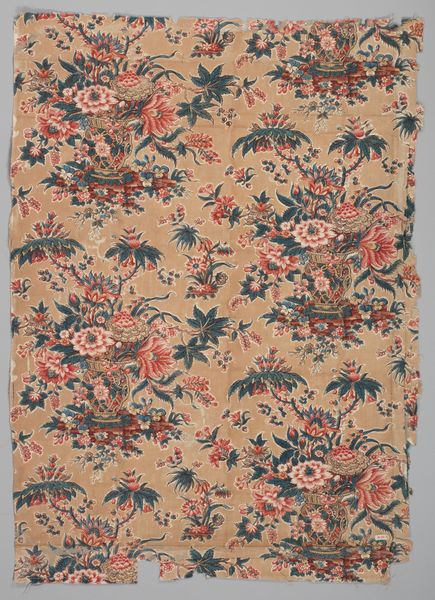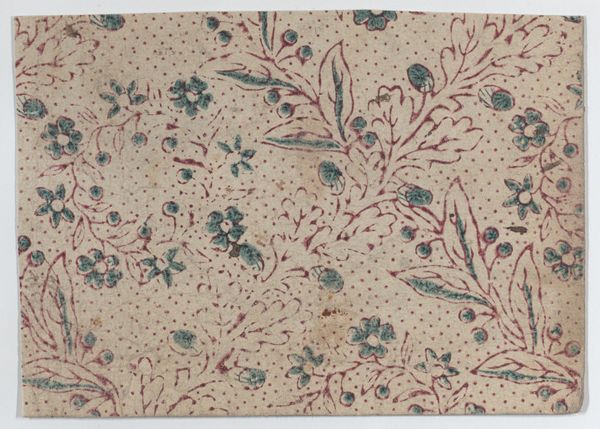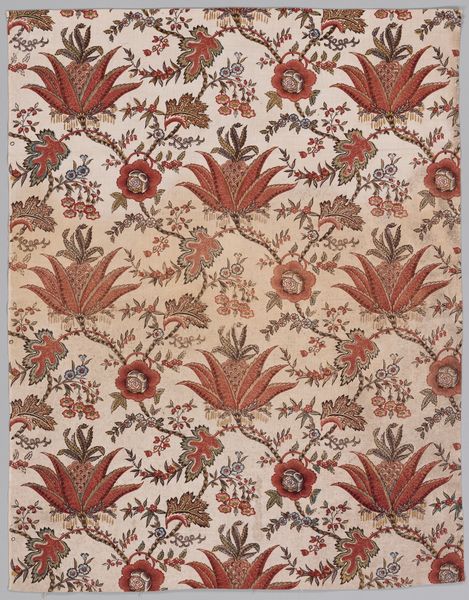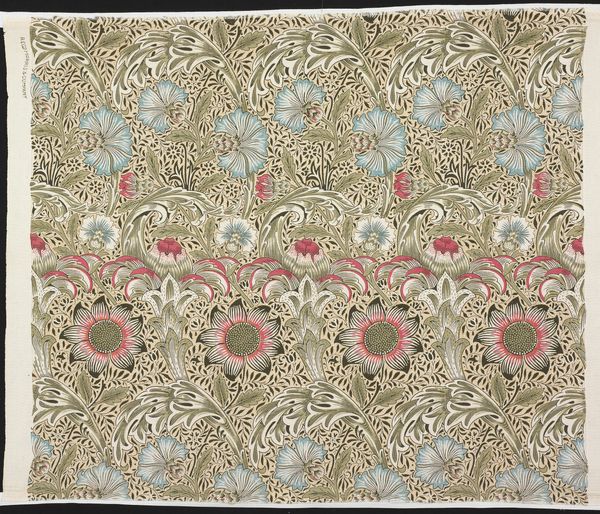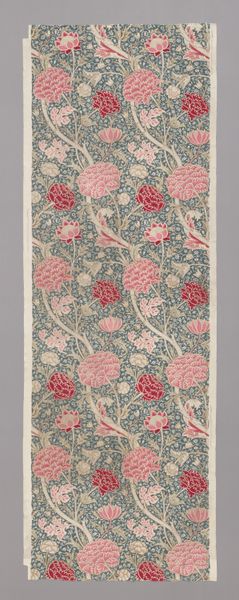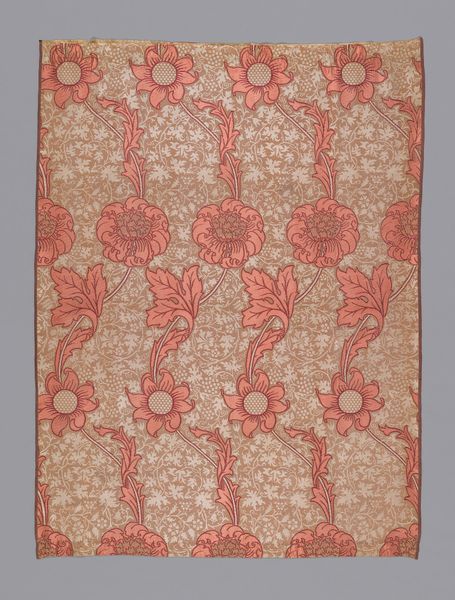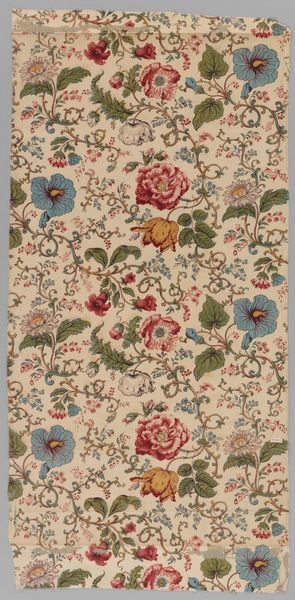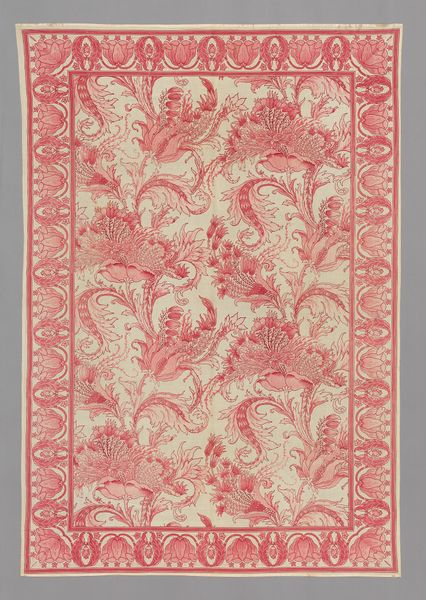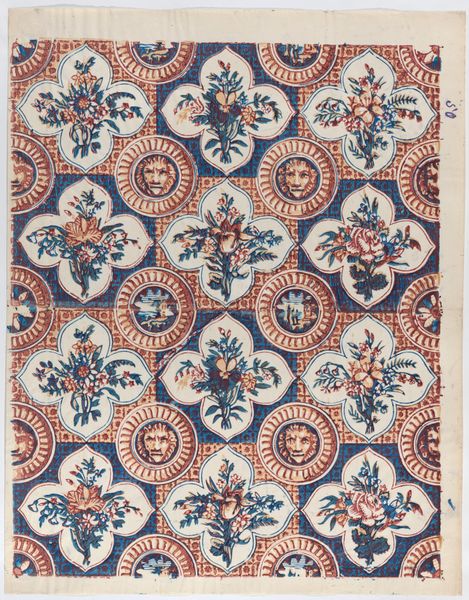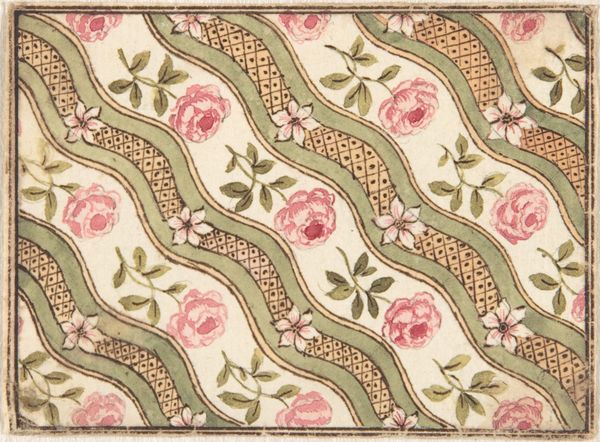
Book cover with two borders with floral patterns 1800 - 1900
0:00
0:00
drawing, print, textile
#
drawing
#
naturalistic pattern
#
organic
# print
#
textile
#
fashion and textile design
#
pattern design
#
organic pattern
#
repetition of pattern
#
regular pattern
#
pattern repetition
#
textile design
#
decorative-art
#
imprinted textile
#
layered pattern
Dimensions: Sheet: 9 15/16 × 16 7/16 in. (25.2 × 41.8 cm)
Copyright: Public Domain
Curator: This is an intriguing piece titled "Book cover with two borders with floral patterns," likely made sometime between 1800 and 1900. Editor: It's incredibly delicate, almost fragile-looking. The muted pinks and greens create a very serene, perhaps even melancholic atmosphere. I’m struck by how the pattern creates layers. Curator: Indeed, what’s interesting to me is considering this within the broader context of textile design at the time. Given it’s a book cover, the repetitive floral motifs speaks to the period's increasing literacy and interest in both naturalism and decoration within domestic life. We must ask about its target demographic too. Editor: Absolutely. Structurally, the alternation between the densely packed flowers and the more restrained, vine-like border establishes a compelling rhythm. Did they imprint this pattern mechanically or through hand-drawn stencils, I wonder? Curator: Determining the printing method would certainly deepen our understanding of its place in the market, and the economics of book production. What social class would have access to such a beautiful design? Mass production of goods impacted what kinds of images and objects became culturally desirable and accessible. Editor: I agree, knowing more about the object's creation and circulation adds so much weight to our understanding. Though regardless of how it was produced, the effect relies on repetition, it highlights a very clear structure of mirroring in the alternating of dense and spare floral arrangements. This kind of mirrored construction suggests order. Curator: Yes, and in a period marked by revolutions and industrial growth, such emphasis on order through repetition may suggest a yearning for stability. We might also consider its availability to women during that time and how that factors into its use. Editor: Fascinating thought! Considering the book cover in this light deepens my appreciation for the subtle visual harmony and carefully calibrated interplay between order and fluidity in these designs. Curator: Indeed, studying everyday objects like these reveals a rich tapestry of social dynamics, and class aspiration during that era. It truly underscores the idea that nothing exists in a vacuum.
Comments
No comments
Be the first to comment and join the conversation on the ultimate creative platform.
